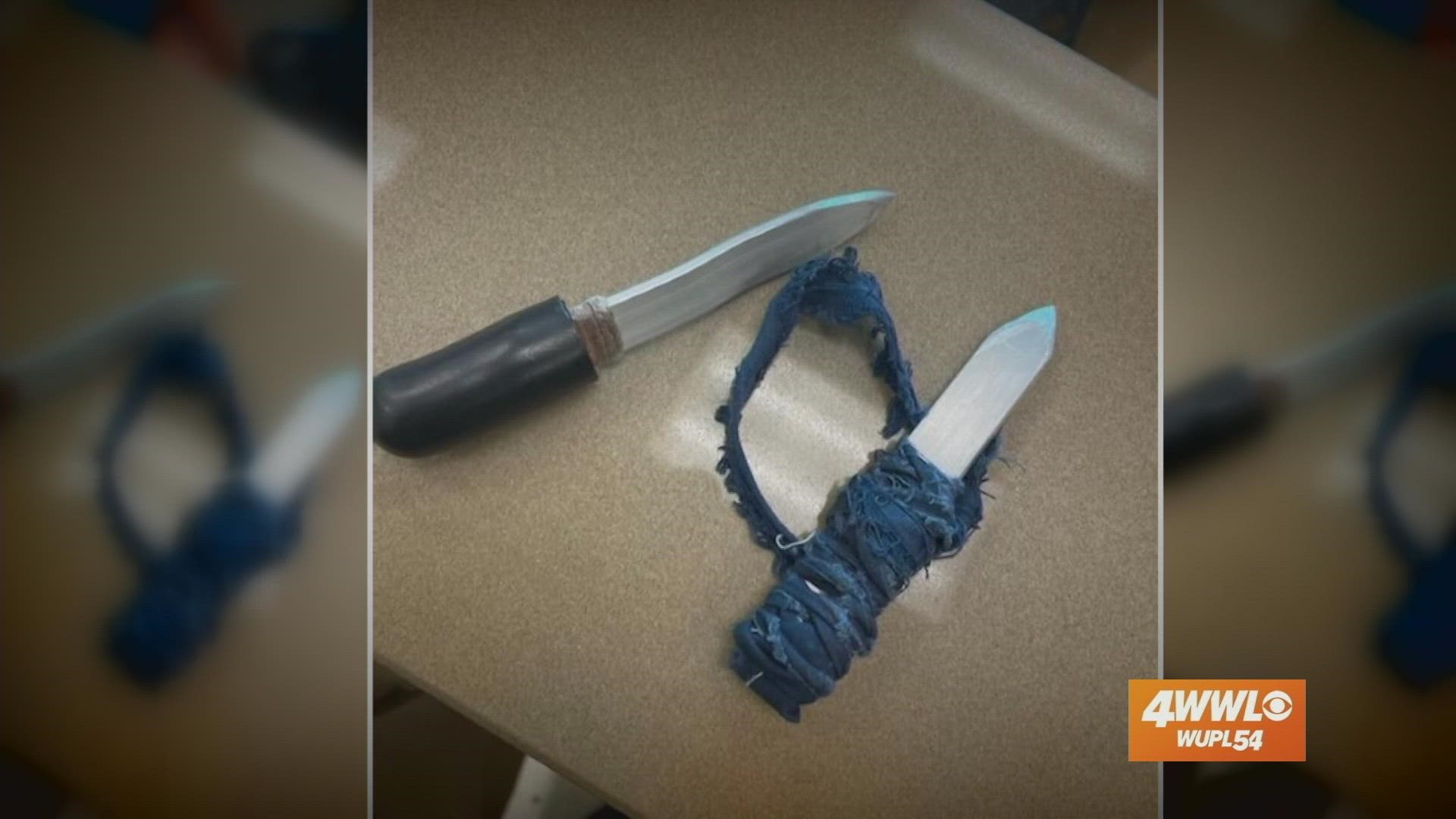NEW ORLEANS — About a month after Orleans Parish Sheriff Susan Hutson took over control of the city’s jail – the Orleans Justice Center – a knife fight involving four inmates left one of them dead. Two days later, an inmate jumped to his death from the mezzanine-level balcony on one of the tiers, an apparent suicide.
Since then, deputies have routinely dealt with fights, stabbings – and when they’re lucky – the confiscation of homemade knives from inmates before they are used to commit violence.
In an exclusive tour of the jail Tuesday, Hutson gave WWL-TV an extensive look inside the relatively new lockup, pointing out unanticipated sources of these crude prison blades and other security hazards: The jail itself.
When OJC began accepting inmates in October 2015, the $150 million jail was considered state-of-the art. With the sheriff's office under a federal consent decree partly due to dangerous conditions, the new building was expected to alleviate at least some of the hazards and violence.
But in many instances, the physical structure has exacerbated the already tough challenge of keeping inmates safe. Hutson quickly pointed to one of the more obvious design flaws: The mezzanine-level jail cells in many of the pods that put inmates at risk of an accident, self-harm or getting thrown to the concrete below by another inmate.
Suicide is the apparent cause of death of the inmate who flung himself from the second tier on June 12, causing a fatal head injury.
“In some of the pods you can step out from the railing there, and actually step onto a ledge,” Hutson said. “I’m not a jail construction expert, but what I do know is it would have been relatively easy to build it differently. And relative to us, it's a big cost to get the funds from the city to put up (protective) mesh.”
That protective renovation for the mezzanine jells is just one part of the more than $3 million Hutson is requesting from the city council for renovations to make the jail safer.
“Keeping one thousand people in here safe from weapons, getting injured, hiding anything, that's difficult right now with this construction,” she said.
Suicides inside the jail are rare, but fights are common, and so are jailhouse weapons fashioned from whatever metal parts inmates can pry loose, as multiple police reports for contraband over the past few months have shown.
Hutson pointed out one blank wall from which shelving had to be removed because the metal parts were being fashioned into the jailhouse knives, known as shanks. Another metal strip around a laundry area is still waiting for removal, the inmates cleared from the pod until the work is complete.
Another construction-related problem is drain covers with protruding screws which can be easily removed to hide shanks and other contraband, including illegal drugs that are often smuggled inside the lockup.
“So, you can see they all have little screws in them. And they shouldn't be able to do that, but they are,” Hutson said.
To light fires to smoke illegal drugs, or to cause vandalism and chaos, Hutson and her staff pointed out a number of unprotected electrical outlets with burn marks where inmates ignited toilet paper.
“It would have been very inexpensive to use different outlets,” Hutson said. “Now we have to go back and replace them.”
A small construction detail, Hutson said, but one that could mean the difference between life or death for an inmate or deputy.
“It's about outfitting this into a more modern jail,” she said.
Hutson pointed out other issues beyond construction oversights, such as a badly outdated internal computer system. But beyond the renovations and other upgrades, Hutson repeated her top priority: Raises for the chronically low-paid deputies. Orleans Parish deputies are currently paid $15.57 an hour, behind most other jail deputies in the region. Hutson is trying to get enough funding to increase the pay to $18 an hour.
As a result of the low pay, the jail is severely understaffed, with only about 148 of the 200 jail deputies that are needed. Hutson characterized her proposed salary increase perhaps the most important safety and security measure.
“You have to have bodies in here to watch and see what’s going on,” she said. “We can go back and look at the video later and see what happened, but having a body here to stop something is critical. And having bodies in here is all about what we pay.”
► Get breaking news from your neighborhood delivered directly to you by downloading the new FREE WWL-TV News app now in the IOS App Store or Google Play.

